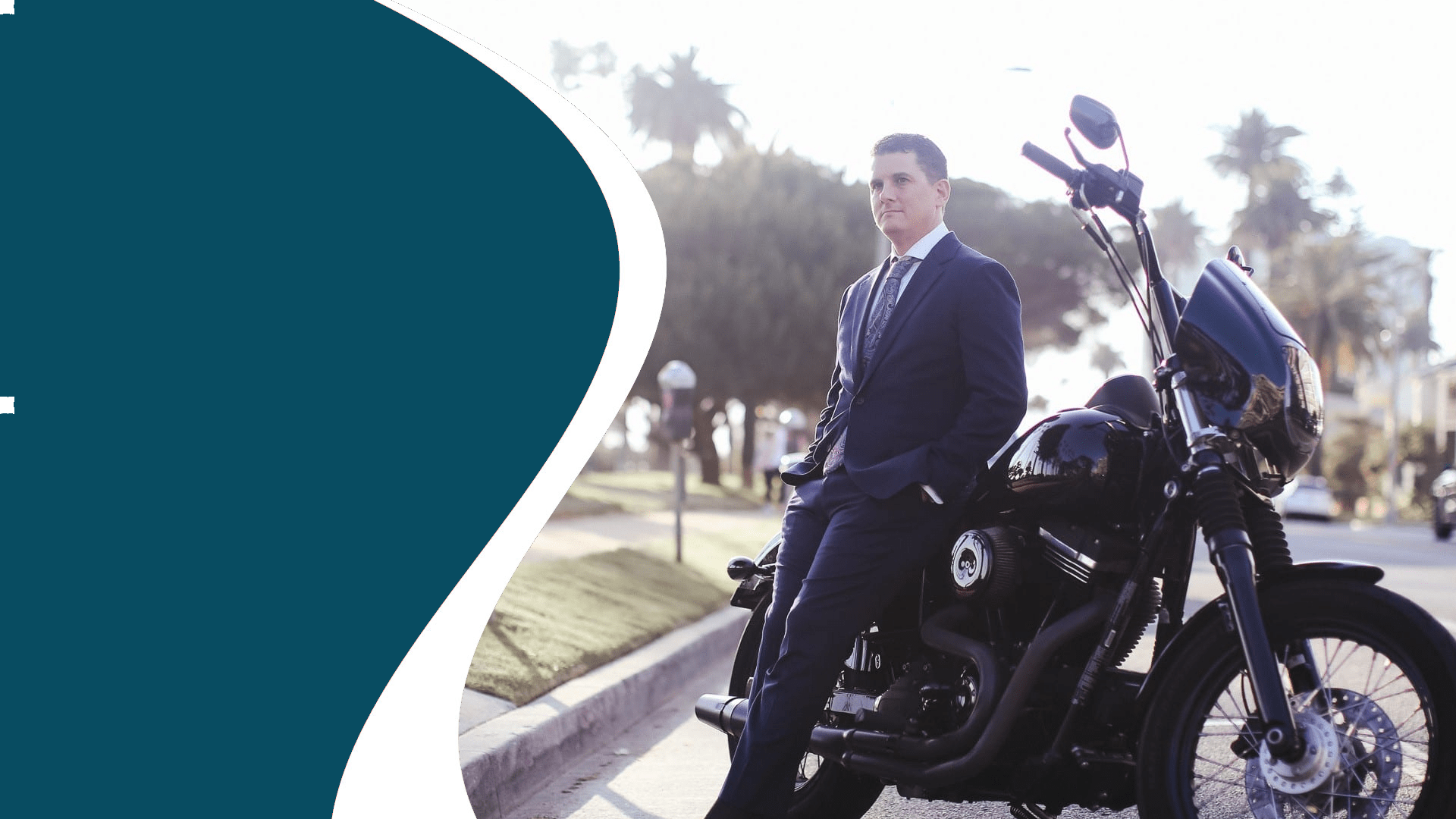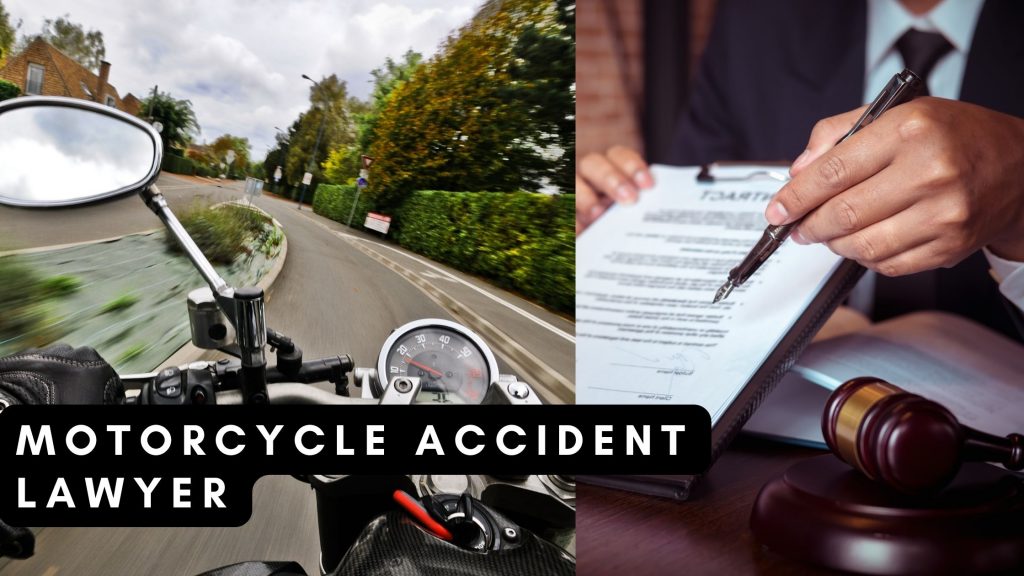lawyermotorcycle is your go-to resource for navigating the complex world of motorcycle accident law, helping riders understand their rights and the legal steps they need to follow after a crash. This guide is designed for anyone who wants to stay informed about motorcycle-specific legal matters, whether you’re an experienced motorcyclist or just starting out on two wheels.
From understanding the specialized role of a motorcycle accident lawyer to learning about common causes of accidents and how to protect your legal interests, this guide covers everything you need. You’ll find practical advice on evidence collection, dealing with insurance companies, recognizing common injuries, and finding the right attorney to represent you. By the end, you’ll be well-equipped to make informed decisions if you’re ever involved in a motorcycle accident.
The Role of a Motorcycle Accident Lawyer
Motorcycle accident lawyers play a crucial part in helping injured riders secure fair compensation and navigate the unique challenges of motorcycle claims. These legal professionals focus specifically on cases involving motorcycles, which present distinct legal and factual complexities compared to general auto accidents. Their expertise extends beyond standard personal injury law to encompass the specialized risks and biases motorcyclists often face.
Specialized Responsibilities of Motorcycle Accident Lawyers
Motorcycle accident lawyers are responsible for a range of tasks that require deep understanding of motorcycle operation, accident reconstruction, and injury patterns. Their duties include:
- Investigating accident scenes with attention to motorcycle-specific dynamics.
- Reviewing helmet laws and safety regulations relevant to the rider’s case.
- Negotiating with insurance companies that may hold biases against motorcyclists.
- Advising clients on repair or replacement costs unique to motorcycles and gear.
- Representing clients in court with evidence tailored to motorcyclist vulnerabilities.
Essential Skills and Knowledge Areas
Effective representation in motorcycle cases demands certain competencies. These include:
- Comprehensive knowledge of local and state motorcycle laws.
- Understanding of common motorcycle accident mechanisms and injury types.
- Strong negotiation skills to counteract insurance company tactics.
- Ability to communicate technical information about motorcycle operation clearly.
- Experience with accident reconstruction specific to two-wheeled vehicles.
Differences from General Personal Injury Attorneys
Attorneys focusing on motorcycle law distinguish themselves from general personal injury practitioners in several key ways:
- They are familiar with the unique legal challenges motorcyclists face, including overcoming prejudices in court and among insurers.
- They have access to industry experts who can testify about motorcycle safety and accident causation.
- They prioritize strategies that address common defenses used against riders, such as claims of recklessness or lack of visibility.
A motorcycle accident lawyer brings targeted expertise that can make the difference between a denied claim and a successful recovery for injured riders.
Common Causes of Motorcycle Accidents
Understanding the most frequent causes behind motorcycle accidents can help riders, attorneys, and policymakers develop targeted prevention strategies. While every crash is unique, certain patterns and risk factors consistently emerge.
Frequent Causes and Preventive Measures
The table below highlights typical causes, brief descriptions, how often they occur, and practical prevention tips.
| Cause | Description | Frequency | Prevention Tips |
|---|---|---|---|
| Left-Turn Collisions | Vehicles turning left across a rider’s path | High (approx. 40% of multi-vehicle crashes) | Slow at intersections, anticipate errors, use high-visibility gear |
| Lane Changes | Drivers failing to check blind spots before switching lanes | Moderate | Stay out of blind spots, keep distance, use horn when necessary |
| Rear-End Collisions | Vehicles striking motorcycles from behind, often at stops | Moderate | Stop at the side of lanes, flash brake lights, monitor mirrors |
| Road Hazards | Debris, potholes, or uneven pavement causing loss of control | Variable | Scan road ahead, adjust speed, take alternative routes when possible |
Legal Rights of Motorcycle Riders
Motorcyclists are protected by various laws designed to ensure their fair treatment after an accident. Knowing these rights is key to safeguarding your interests during legal and insurance proceedings.
Core Legal Protections for Motorcyclists

After an accident, riders can assert several important rights. These include:
- The right to receive prompt medical attention and emergency care.
- The right to file a claim for property damage and personal injury.
- The right to representation by an attorney throughout the claims process.
- The right to remain silent and consult legal counsel during police questioning.
- The right to review and respond to police and insurance reports before accepting settlements.
- The right to collect, preserve, and submit evidence supporting your version of events.
- The right to appeal denied insurance claims or contest liability findings in court.
Riders should exercise these rights from the moment an accident occurs, especially when bias or misunderstanding could impact the outcome of their case.
Procedures During Police Investigations and Insurance Claims
Navigating official and insurance processes requires awareness of how and when to assert your rights:
- During police investigations: Provide only factual information, request a copy of the accident report, and avoid discussing fault before consulting your attorney.
- When dealing with insurance: Submit your claim promptly, document all communications, and do not accept initial settlement offers without legal review.
Steps to Take After a Motorcycle Accident
Following an accident, taking the right actions can help ensure your health and protect your legal claims. Timely and organized steps increase the chances of a fair recovery and strong case documentation.
Immediate and Follow-Up Actions for Riders, Lawyermotorcycle
The table below Artikels the essential steps, their purposes, recommended timing, and the responsible parties.
| Action | Purpose | Timing | Responsible Party |
|---|---|---|---|
| Check for injuries | Ensure safety and address medical emergencies | Immediately after accident | Rider, bystanders |
| Call emergency services | Obtain professional medical and police assistance | Immediately | Anyone at scene |
| Document the scene | Collect evidence for insurance and legal purposes | Within minutes to hours | Rider, witnesses |
| Notify insurance and consult a lawyer | Initiate claims and protect legal rights | Within 24 hours | Rider |
Evidence Collection and Documentation
Gathering solid evidence at the accident scene can make a significant difference in securing a positive legal outcome. Proper documentation supports your version of events and can counter disputes raised by other parties or insurers.
Methods for Gathering Evidence
Effective methods include both physical and digital strategies:
- Photographing vehicle positions, road conditions, and visible injuries from multiple angles.
- Collecting witness contact information and statements.
- Securing police reports and obtaining any traffic camera footage.
- Saving damaged gear and motorcycle parts as physical evidence.
Essential Documents and Photographs
Building a strong case requires specific documentation. Always aim to collect:
- Photos of the entire accident scene, close-ups of damage, and any road hazards.
- Copies of insurance policies (yours and others’ involved).
- Medical records, including emergency room and follow-up visits.
- Repair estimates and receipts for motorcycle and gear.
- Official police accident reports and witness statements.
Best Practices for Preserving Evidence
Following best practices ensures no critical information is lost:
- Store digital photos and documents in at least two secure locations.
- Label all physical evidence with date and description for easy reference.
- Do not alter or repair your motorcycle before consulting your lawyer.
- Keep a written log of your injuries, symptoms, and recovery progress.
- Regularly back up all case-related communications and files.
Well-preserved evidence is often the foundation of a successful motorcycle accident claim.
Dealing with Insurance Companies

Insurance companies are primarily focused on minimizing payouts, which makes informed negotiation and clear communication essential for motorcyclists after a crash. Knowing how to approach adjusters, file claims, and follow up can greatly impact your compensation.
Negotiation Strategies and Claim Procedures
Effective strategies include documenting all communications, staying factual, and avoiding admissions of fault. Filing a claim typically involves submitting an incident report, photographs, supporting documents, and ongoing updates as the investigation progresses.
Sample Communication Tips for Insurance Adjusters
The table below offers practical language and strategic approaches for various common claim situations.
| Situation | Strategy | Recommended Language | Expected Outcome |
|---|---|---|---|
| Initial claim report | State facts only, avoid speculation | “I am reporting the facts of the accident as I experienced them.” | Accurate record, less room for misinterpretation |
| Request for recorded statement | Politely decline, refer to attorney | “I prefer to speak through my legal representative.” | Prevents self-incrimination or unintentional errors |
| Settlement offer | Request written details, review offer before responding | “Please provide the full settlement terms in writing for review.” | Time to assess if offer is fair |
| Denial of claim | Request explanation, gather evidence for appeal | “Please provide the specific reasons for denial in writing.” | Clear grounds for dispute or appeal |
Common Injuries in Motorcycle Accidents: Lawyermotorcycle
Motorcyclists are exposed to greater risks of serious injuries compared to occupants of enclosed vehicles. Understanding the types of injuries, their symptoms, and long-term impacts can help riders, families, and attorneys address medical and legal needs after a crash.
Typical Injury Types and Consequences

The table below summarizes frequent injuries, how they present, and their potential effects over time.
| Injury Type | Symptoms | Long-term Impact |
|---|---|---|
| Road Rash | Skin abrasions, bleeding, pain, infection risk | Scarring, nerve damage, possible need for skin grafts |
| Fractures | Pain, swelling, deformity, loss of function | Permanent disability, mobility issues, arthritis |
| Traumatic Brain Injury (TBI) | Headache, confusion, loss of consciousness, memory loss | Cognitive impairment, behavioral changes, ongoing therapy |
| Spinal Cord Injury | Loss of sensation, paralysis, weakness | Paralysis, chronic pain, lifelong care needs |
| Internal Injuries | Abdominal pain, swelling, hypotension, shock | Organ dysfunction, prolonged recovery, potential fatality |
Compensation Types Available for Motorcycle Accidents
Victims of motorcycle accidents may be eligible for several types of compensation depending on the circumstances of the crash and the extent of their injuries. Understanding these categories helps riders and their attorneys pursue full and fair recovery.
Overview of Compensation Categories
This table Artikels the primary compensation types and what each covers.
| Type of Compensation | Description |
|---|---|
| Medical Expenses | Covers hospital bills, surgeries, medications, physical therapy, and future medical needs arising from the accident |
| Lost Wages | Reimburses income lost due to inability to work during recovery or disability |
| Pain and Suffering | Compensates for physical pain and emotional distress resulting from injuries |
| Property Damage | Pays for repair or replacement of the motorcycle and personal gear |
| Loss of Consortium | Addresses impact on family relationships due to severe injuries or fatality |
Laws Specific to Motorcyclists by State or Region
Motorcycle laws can vary widely across different regions, affecting everything from helmet requirements to lane splitting and other unique regulations. Staying informed about local laws is crucial for both safety and compliance.
Key Regional Laws Impacting Motorcyclists
The following table provides a sample overview of how laws may differ by location.
| State/Region | Helmet Law | Lane Splitting | Unique Regulations |
|---|---|---|---|
| California | Universal helmet required | Permitted | Motorcyclists allowed to use HOV lanes regardless of passenger |
| Texas | Helmet required under age 21 | Not permitted | Optional safety course for experienced riders |
| Florida | Helmet optional over age 21 with $10,000 insurance | Not permitted | Eye protection required for all riders |
| New York | Universal helmet required | Not permitted | Daytime headlight use mandatory |
Selecting the Right Motorcycle Lawyer
Choosing the best attorney for your motorcycle accident case can significantly affect the outcome. Not every personal injury lawyer is equipped with the specialized experience needed to handle motorcycle-specific challenges.
Essential Qualities of Effective Motorcycle Lawyers
Evaluating potential attorneys involves assessing various attributes. A focused checklist includes:
- Demonstrated experience handling motorcycle accident cases
- Knowledge of local and state motorcycle regulations
- Strong client testimonials specific to motorcycle claims
- Trial experience and a proven track record in court
- Access to industry experts and accident reconstructionists
- Clear and timely communication throughout the case
- Transparent fee structures and agreements
Verifying a Lawyer’s Motorcycle Case Experience
Assessing a lawyer’s background can be done by:
- Requesting case studies or summaries of past motorcycle accident claims handled
- Checking credentials, certifications, and professional affiliations
- Reading reviews and testimonials from previous motorcycle clients
- Interviewing multiple attorneys before making a final decision
The right motorcycle lawyer not only understands the law but also advocates for the unique needs of every rider.
Conclusion
Whether you’re recovering from an accident or simply want to be prepared, lawyermotorcycle offers essential information to help you safeguard your rights and seek fair compensation. With the knowledge and tips provided here, you’ll have the confidence to handle any legal situation related to motorcycle accidents, making your journey on the road safer and more secure.
FAQ Summary
Do I need a specialized motorcycle lawyer for my accident case?
Yes, a specialized motorcycle lawyer understands the unique aspects of motorcycle accidents and can provide better representation than a general personal injury attorney.
What should I bring to my first consultation with a motorcycle lawyer?
Bring all accident-related documents, including police reports, medical records, photographs, insurance information, and any communication with other parties.
How long do I have to file a motorcycle accident claim?
The time limit varies by state but typically ranges from one to three years after the accident. It’s important to consult a lawyer as soon as possible to avoid missing deadlines.
Can I still claim compensation if I was partially at fault?
In many states, you can still seek compensation even if you were partly at fault, but your percentage of fault may reduce your total compensation.
How much does a motorcycle accident lawyer charge?
Most motorcycle accident lawyers work on a contingency fee basis, meaning they only get paid if you win your case. Fees usually range from 25% to 40% of your settlement.
